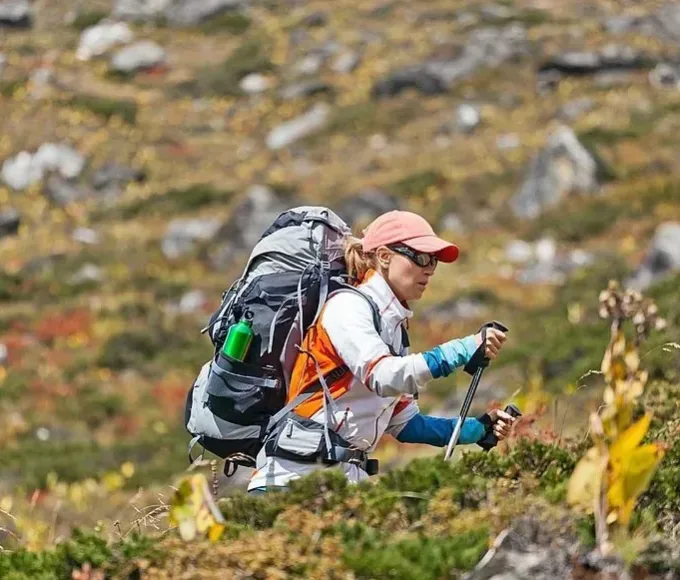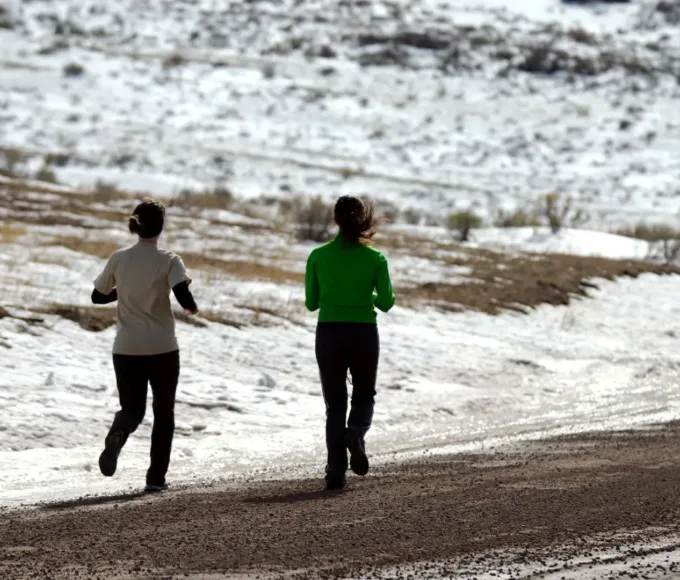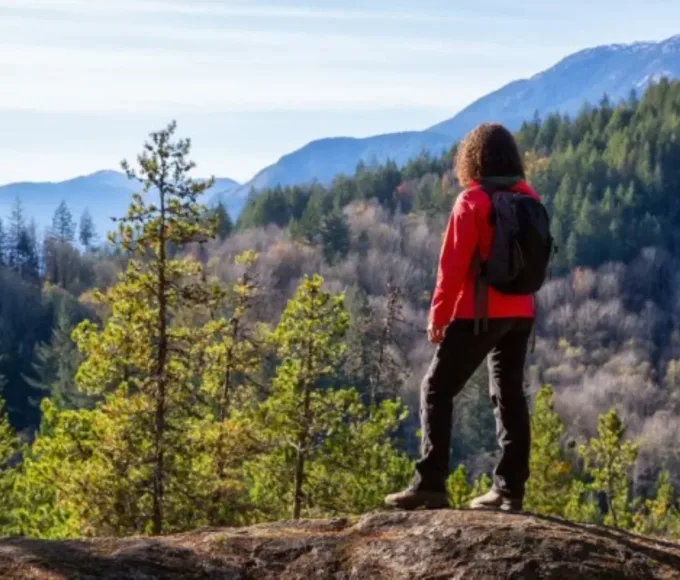
Winter hiking requires more planning than a regular hiking excursion because you need to take extra safety precautions to combat harsh elements. One of the first things we recommend doing is to make sure you’re prepared by looking up current trail conditions for the trail you want to hike and make sure you can get to the trailhead safely.
In addition, here are several winter hiking tips to be aware of that differ from hiking in other seasons:
– Days are shorter in winter, so hit the trail early to avoid being out in the dark.
– Winter hiking takes longer than summer hiking – you tend to move slower and
encounter more obstacles. Plan accordingly.
– Technological devices tend to malfunction in cold temperatures, so be prepared
by bringing extra batteries and try to keep your devices warm. Don’t rely solely on your phone and keep it in airplane mode to reduce power use.
– Snowpack can hide the trail and trail markers making it easier to get lost. Pay
attention and learn how to use a map.
– Exercising in winter burns more calories, so you need to stay nourished. This will
help keep you warm, too.
– Dehydration expedites the onset of hypothermia, so stay hydrated. If you feel
thirsty, you’re already dehydrated.
Tips for staying warm hiking in the winter
Brink a warm drink in a thermos
Stay hydrated
Hike when the sun is highest in the sky and the warmest
Choose trails with some uphill to get the blood flowirng
Bring snacks you cane at without stopping
Tips on what to werar for winter hiking
The key to comfort when hiking in the winter is staying warm AND dry.
Tops – When hiking in cold weather, you should have 3 layers on top. If you get hot, shed a layer before you get too sweaty. Also, avoid cotton and opt for synthetic layers that wick moisture and are quick-drying instead. Always pack a pair of gloves. Wearing a hat is one of the most important winter hiking tips to retain your body heat. Even if you don’t think you’ll need one, it’s smart to carry one in your pack just in case.
Bottoms – On the bottom, you’ve got some options. If it’s really cold or snowing, you’ll want to consider wearing a base layer and a waterproof layer on top. You can even wear ski pants. Otherwise, a pair of fleece leggings will do the trick, keeping you warm and comfortable.
Boots – For snowy winter hikes, you’ll want a good pair of boots with solid traction. Regular waterproof hiking boots will do, but if you are going to hike a lot in the winter, consider investing in a pair of insulated winter boots, that will ep your toes a lot warmer.
Consider attaching to your shoes microspikes, crampons or snowshoes, for more safety. Always have a safety plan and check the wheather conditions before you leave.
Sources: Bear Foot Theory
Recent Posts
Related Articles
Day Hiking Essentials
Heading out for a day hike is a delightful way to...
June 19, 202310 Practical Ways to Improve Time Management Skills
Do you often feel stressed out with too much work or too...
June 19, 2023Ways to Get Exercise While You Travel for the Holidays
During the next two weeks, most of the people will travel for...
June 19, 2023Why is travelling good for your mental health?
It's no news that travel is good for your physical wellbeing, but...
June 19, 2023

























Leave a comment